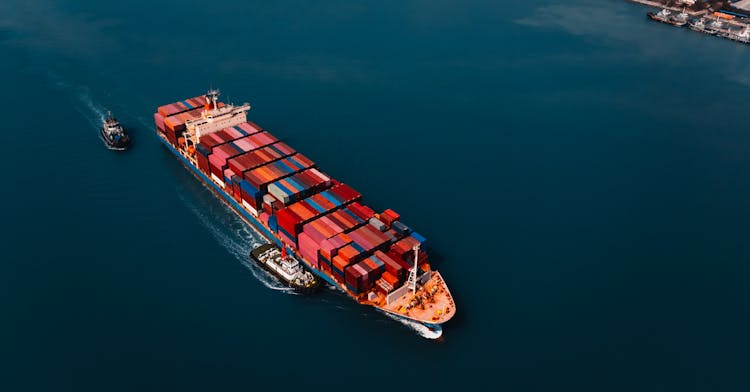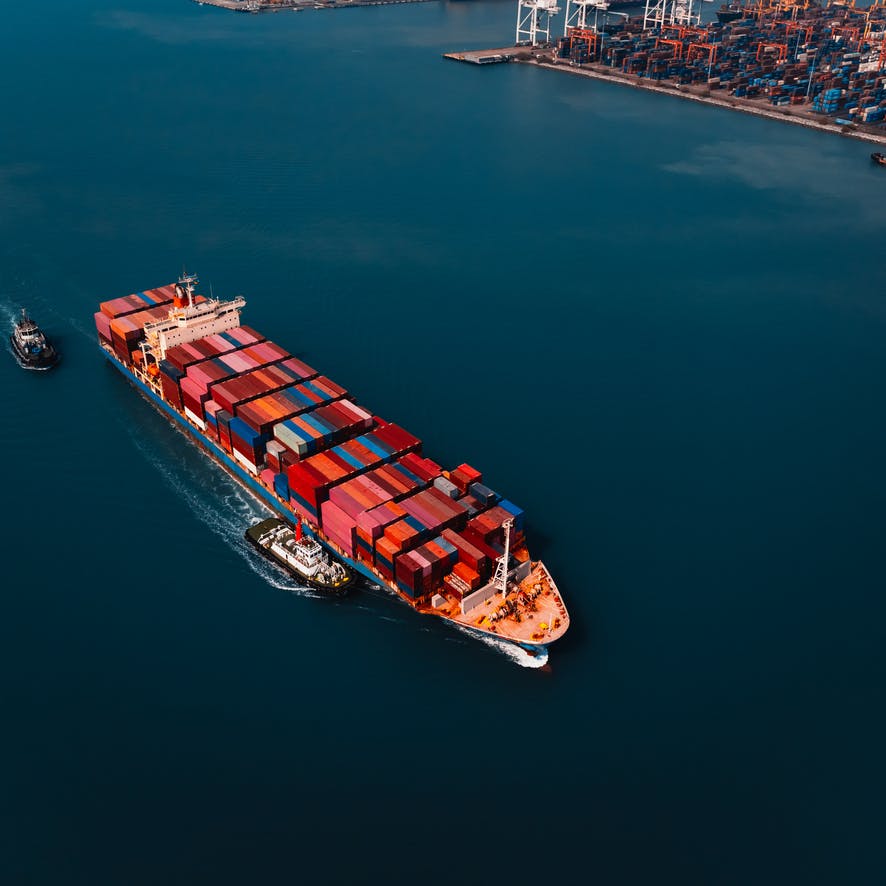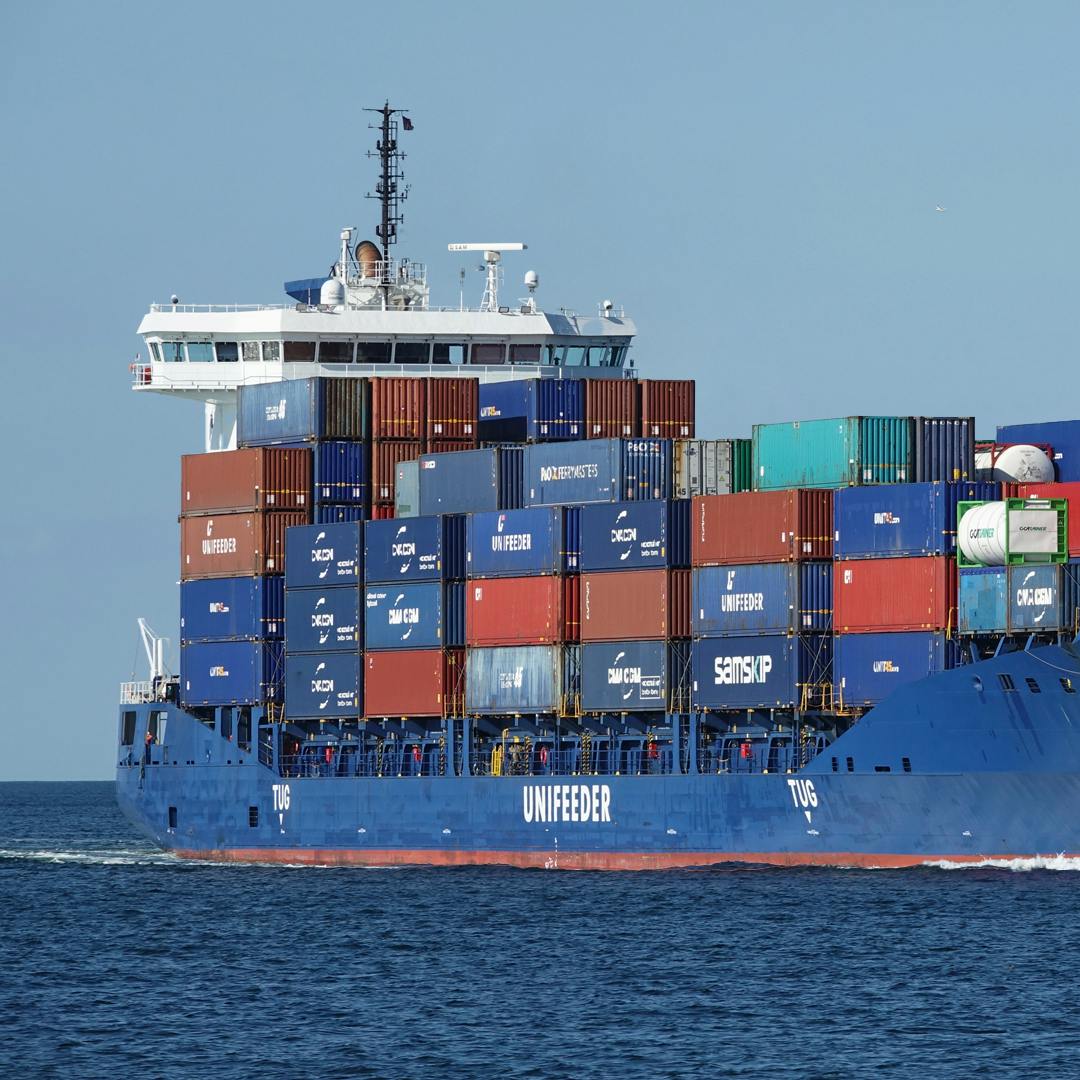Ports are the hubs of global trade. When you consider that global trade is estimated to reach $100 trillion by 2050 and that around 90% of traded goods are carried by sea, the significance of ports to the global economy becomes even clearer. Between them, the top five busiest ports in the world have a container throughput of over 168 million TEU* a year. How they optimise port calls, and manage the flow of cargo into and out of port operations, has a considerable bearing on the smooth running of supply chains around the world. * Twenty-foot equivalent units, the measure of container volume.
Diving into the 5 Largest Harbours in the World
Here, we examine the top five busiest ports in the world based on throughput, ranked according to 2021 container TEU data from the World Shipping Council.1. Port of Shanghai, China
The Port of Shanghai is the busiest port in the world, handling 47.03 million TEU in a year. That is almost 10 million more TEU than the second placed port, and more than three times that of Rotterdam, in the Netherlands, which is the highest placed European port by volume. The Port of Shanghai is strategically located in the Yangtze River Delta, an industrial hub that generates around a fifth of the country’s GDP. Developing, “smart, green, technology-driven and efficient port management” is a strategic goal of the port as it strives to empower its business with digital technologies.2. Port of Singapore, Singapore
In second place, the Port of Singapore handles 37.49 million TEU a year, around 100,000 TEU daily. It has 55 berths and connections to 600 ports globally. Its strategic location in Southeast Asia makes it ideally placed as a key hub in the global supply chain. The port reportedly handles half of the world’s shipments of crude oil. Singapore is currently phasing in the Tuas port, targeted to complete in the 2040s, at which time it is expected to have a handling capacity of 65 million TEU. Tuas port is cited to pave the way in digitalisation and sustainability as the Maritime and Port Authority of Singapore (MPA) works with port operators to drive the adoption of digital technologies at the Port of Singapore.3. Port of Ningbo-Zhoushan, China
The Port of Ningbo-Zhoushan in China was formed when the two ports of Ningbo and Zhoushan merged. It is located south of Shanghai and handles 31.07 million TEU annually. The port reportedly opened 14 new container services this year, taking its total shipping routes to 301 supported by upgraded port operation capacity.4. Port of Shenzhen, China
The third largest port in China is fourth overall in the world ranking. The Port of Shenzhen is a collection of a number of ports along the coast of Shenzhen in the Guandong Province. In 2021, it handled 28.77 million TEU. Shenzhen is home to tech giants - it is sometimes referred to as China’s Silicon Valley – placing the port ideally to ship its goods around the world.5. Port of Guangzhou, China
Another Chinese port rounds off the top five busiest ports in the world. The Port of Guangzhou boasts a handling capacity of 24.18 million TEU. The port recently partnered with the Port of Los Angeles on a Green Shipping Corridor, collaboration on digital supply chain infrastructure and other sustainability initiatives.Embracing Digital Transformation in Container Shipping
This snapshot of the world’s top five ports provides insight into the fundamental role that ports occupy, moving goods around the globe. Ports are the hubs of shipping activity, moving vessels in, unloading and loading, providing in-port services such as maintenance and fuelling, and moving vessels out. When you consider the volume of containers the world’s ports handle, the need for operational efficiency, to keep supply chains running smoothly, is clear. Digital transformation is central to operational efficiency and port call optimisation because it makes information exchange more reliable and timely. Port authorities, terminal operators, carriers and more, continually circulate information to manage and co-ordinate vessels’ arrivals, departures and port call activities. EDI, email and the telephone are primary channels for this communication, but they are slow, undocumented and can’t guarantee a response. Instead, port call activities need standardised digital information exchange to streamline communication and keep all parties informed. Digital channels are quick, efficient and can provide a consistent user experience. Standardisation is important because supply chain partners use a range of technology platforms. Standardising data exchange enables all systems to communicate with each other, without the need for lengthy and potentially expensive onboarding.DCSA’s Just in Time (JIT) implementation framework supports port call optimisation by creating efficient negotiation and communication of vessels’ arrivals and departures and activities whilst at port. When port call partners know accurately when ships will arrive, they can plan terminal operations and port services efficiently, and subsequent port calls that impact the vessels that follow. In this way, digitalisation, and JIT in particular, reduces waiting time for vessels entering ports and idling time of all port operation assets. It also allows slow steaming, reducing fuel consumption.The Future Landscape of Container Shipping
The biggest ports in the world form part of a shipping ecosystem that is the foundation of global trade. Carriers, shippers and many more stakeholders rely on them to function well and to handle their shipments efficiently. With the increase in global trade as outlined, port call transparency and an efficient shipping ecosystem become even more important to prevent congestion. Ports, container shipping and international trade are at a digital turning point. Digital platforms are increasingly used in local ecosystems, but they can be better utilised when the data they exchange is standardised. This enables earlier transparency of port call events, and ultimately performance benchmarking, analysis potential. Vessels and ports are making the switch to greener, more expensive fuel types. This requires more emphasis on fuel consumption reduction to limit costs. The future landscape of port calls and container shipping is timely, accurate, efficient information exchange that delivers an optimal user experience for smooth operations, unhindered global trade and a greener supply chain altogether.What can you do to help?
DCSA spearheads open-source digital standards and collaboration to further the digitalisation of container shipping. Digital shipping standards enable interoperability for seamless data exchange so that supply chain partners can establish rapid communications pathways and act on high quality information faster for better outcomes. Get involved:- Access the Just in Time (JIT) implementation framework
- Find out more about the urgency of port call optimisation and Just in Time
- Subscribe to receive the latest news and updates
- Contact us to find out more.
- Join the DCSA+ shipping programme.





